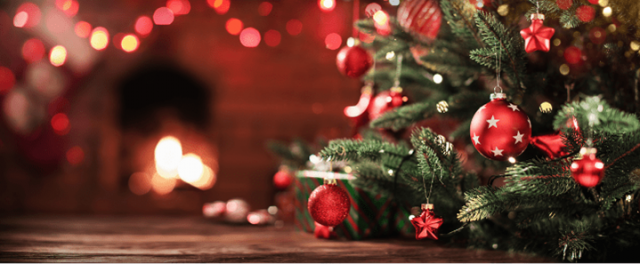As someone who sells incredible Christmas decorations online, Bobby Caldwell of Erie, Pal , loves this time of year. The holiday season is a time of joy, love, and celebration, and no Christmas decoration is more iconic than the towering Christmas tree adorned with twinkling lights and ornaments. From the festive wreaths and centerpieces to the elaborate window displays, Christmas decorations have the power to transform homes into enchanting winter wonderlands. But Bobby Caldwell of Erie, PA, asks have you ever wondered about the evolution of Christmas decorations over time? It’s a fascinating journey, reflecting cultural influences, religious symbolism, and technological advancements.
Bobby Caldwell of Erie, PA, notes the origins of Christmas decorations can be traced back to ancient pagan traditions, particularly the Roman feast of Saturnalia. During this winter solstice celebration, homes were decorated with greenery, symbolizing life and the promise of spring amidst the darkness of winter. As Christianity spread in the 4th century, these pagan traditions merged with Christian symbolism, giving rise to new Christmas decorations.
The Christmas tree, perhaps the most iconic Christmas decoration, originated from German traditions. In the Middle Ages, evergreen trees, symbolizing eternal life, were decorated with apples and nuts to represent abundance and fertility. Later, candles were added to represent the light of Christ.
Bobby Caldwell of Erie, PA, notes the 16th century marked the introduction of glassblowing techniques, leading to the creation of delicate glass ornaments. These ornaments, often shaped like fruits and nuts, were initially considered a luxury, but as glassblowing techniques improved, they became more accessible. In the 19th century, German immigrants brought the tradition of glass ornaments to America, popularizing their use. Hans Greiner, a German glassblower, is credited with creating the first mass-produced glass ornaments in 1847, known as “Kugels.”
The invention of electric lights in the late 19th century revolutionized Christmas decorations, according to Bobby Caldwell of Erie, PA. In 1882, Thomas Edison’s incandescent lights were first used to decorate a Christmas tree at the White House, quickly gaining popularity and transforming Christmas trees into dazzling displays of light. Electric lights also allowed for the expansion of Christmas decorations beyond the tree. Houses were adorned with strings of lights, and window displays became increasingly elaborate. The use of electric lights added a touch of magic and wonder to the Christmas season.
The 20th century brought about a surge of new Christmas decorations, reflecting evolving tastes and technological advancements. Plastic ornaments became widely popular due to their affordability and durability. Artificial Christmas trees also gained traction, offering convenience and longevity. Cultural influences also played a significant role in shaping Christmas decorations notes Bobby Caldwell of Erie, PA. For instance, the introduction of tinsel, originating from Ukraine, added a touch of sparkle and shine to Christmas trees. Additionally, ornaments inspired by popular culture, such as Disney characters and sports figures, became increasingly common.
Christmas decorations have come a long way over the years. Nowadays, they are more modern and eco-friendly. LED lights are now the preferred choice for Christmas tree lighting because of their energy efficiency and vibrant colors. Personalized ornaments are also gaining popularity, as they reflect individual tastes and family traditions. Sustainability is also becoming more important in the world of Christmas decorations. Eco-friendly ornaments made from natural materials, such as wood, paper, and recycled glass, are increasingly available. Additionally, more people are using artificial trees made from recycled materials as they seek to reduce their environmental footprint. The art of Christmas decoration has come a long way, reflecting the changing times and technological advancements. Today, people are more concerned about energy efficiency and sustainability, which is why LED lights are increasingly becoming the preferred choice for Christmas tree lighting. They are known for their vibrant colors and low energy consumption. Additionally, personalized ornaments are gaining popularity, as they reflect individual tastes and family traditions. These can be custom-made to suit any style, from traditional to contemporary.
Sustainability is also gaining traction in the realm of Christmas decorations, with the availability of eco-friendly ornaments made from natural materials such as wood, paper, and recycled glass. Such ornaments are not only beautiful but also environmentally conscious, explains Bobby Caldwell of Erie, PA.
As we look to the future, Christmas decorations are expected to continue to evolve, incorporating technological advancements and reflecting changing societal values. Interactive ornaments that respond to touch or voice commands could add a new level of engagement to Christmas décor, allowing people to interact with their decorations in a more meaningful way. Moreover, the integration of artificial intelligence and augmented reality could create immersive and personalized Christmas experiences that people will never forget. From smart trees that light up according to your mood to interactive ornaments that play your favorite carols, the possibilities are endless.
In conclusion, Bobby Caldwell of Erie, PA believes the evolution of Christmas decorations is a captivating tale of cultural exchange, technological innovation, and artistic expression. From ancient pagan traditions to the present day, these adornments have transformed homes into festive havens, embodying the spirit of Christmas and its enduring message of hope, joy, and love.









